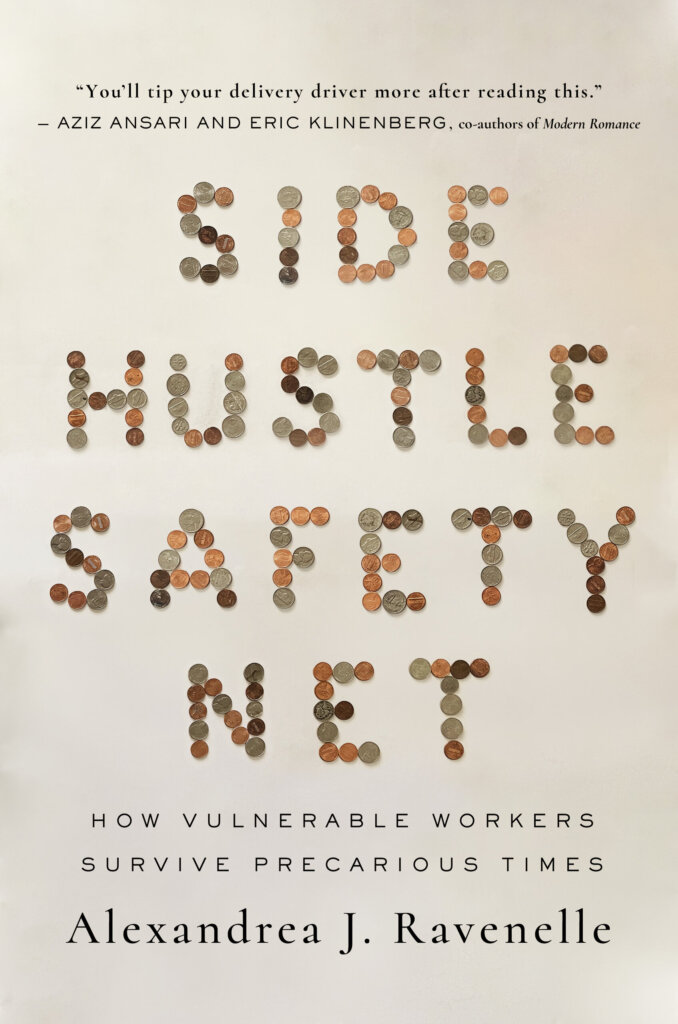By Alexandrea Ravenelle, author of Side Hustle Safety Net: How Vulnerable Workers Survive Precarious Times
Since 2015—which seems like a different era entirely—I’ve interviewed hundreds of gig workers about the downsides of gig work: economic uncertainty, sexual harassment, physical risks, even accidental involvement in criminal activity. It’s the reverse image of the quasi-entrepreneurial lifestyle that’s often depicted by gig platforms.
One constant theme is the issue of unemployment. There are at least two factors here: gig workers don’t often qualify for benefits after being deactivated from a platform; and (for some workers) gig work is “unemployment lite” — the option they turn to after a layoff or when their unemployment benefits run out.

My newest book, Side Hustle Safety Net: How Vulnerable Workers Survive Precarious Times, focuses on the issue of unemployment assistance for gig workers during the COVID-19 pandemic.
The book draws on interviews with nearly 200 gig-based and precarious workers conducted during the height of the first wave of COVID, and again during the Fall 2020-Spring 2021 surge. I find that the pandemic — and their unemployment status — divided workers into broad categories of increasingly precarious or increasingly secure, but not always in ways we would expect.
Workers who qualified for unemployment assistance — the status of “officially unemployed” — received a life-changing level of financial assistance, funds that allowed them the time to seek appropriate career opportunities. These workers launched successful businesses, left gig work behind, returned to school, and secured more stable jobs with increased salaries and benefits.
But while the future of work is becoming ever more ‘gigified,’ unemployment insurance systems remain antiquated. For workers who engaged in polyemployment — working multiple jobs to make ends meet — unemployment benefits typically don’t address their true income loss. As a result, during the pandemic, I found workers turned to survival strategies including selling “clean pee” for drug tests, sex work, and delivering pot, all while attempting to avoid job scams.
Meanwhile, the forgotten jobless — those workers who didn’t qualify for unemployment benefits, didn’t know about it, or simply viewed it as “not for people like me” — were left to the side hustle safety net of gig work. To paraphrase Abdul, a 27-year-old Middle Eastern American, and member of the forgotten jobless, people without access to the status of “officially unemployed” get to “work a little bit harder” at staying on their tightrope, or “maybe suffer a little bit more” when they fall. For these workers, supporting their families during the pandemic meant turning to the gig economy, often delivering food and groceries to shelter-at-home peers.
Overall, Side Hustle Safety Net argues that the rise of gig work and independent contracting, partnered with under-employment, and growing economic instability, has increased worker precarity with disastrous implications during a sudden economic collapse. Drawing extensively on hundreds of hours of interviews, Side Hustle Safety Net highlights the plight of low-wage and minimum-wage workers, and offers a critique of how gig platforms have marketed themselves as a solution to unemployment and stagnant wages while contributing to worker precarity.
